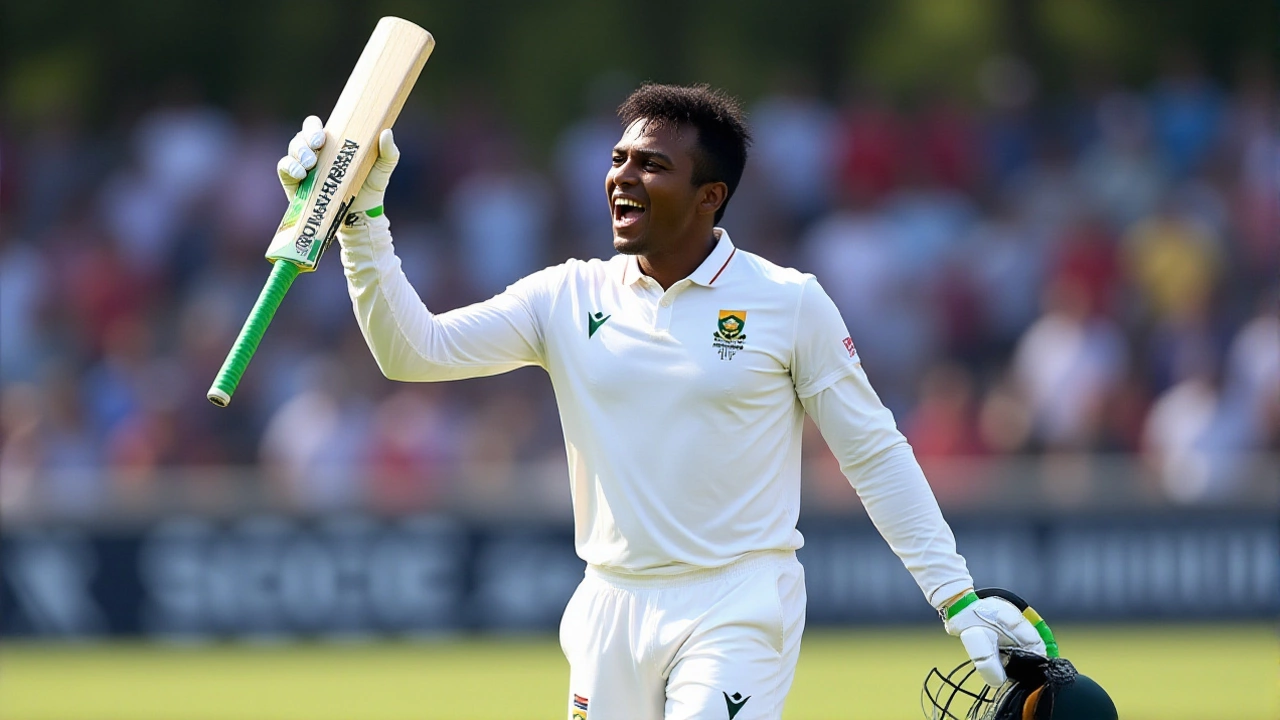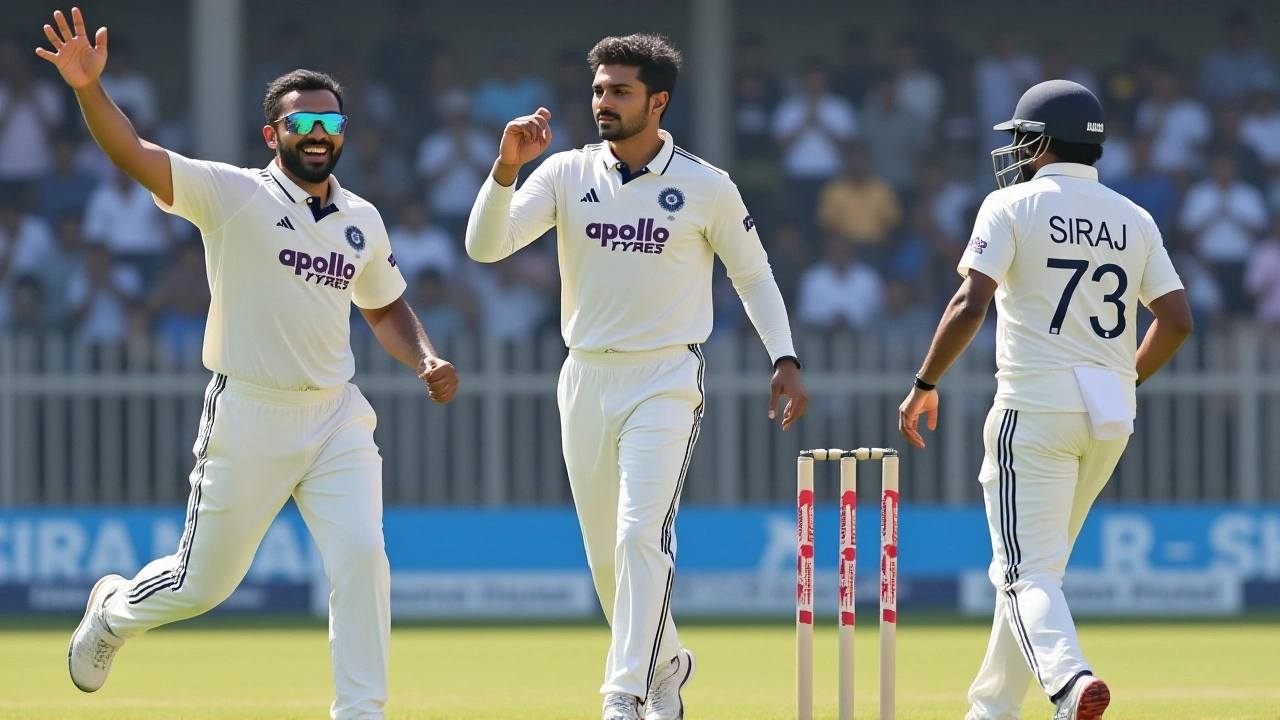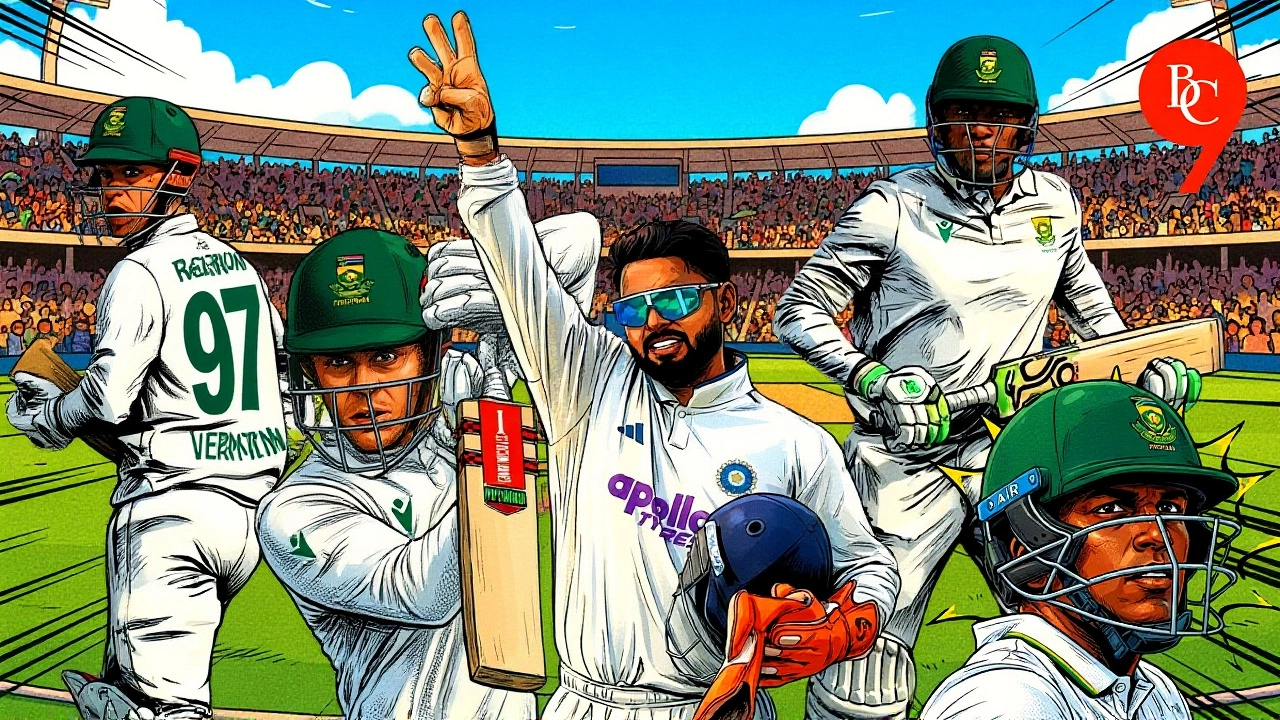When the sun set over Barsapara Stadium on November 23, 2025, India’s hopes of saving face in the second Test against South Africa had all but vanished. At stumps, the hosts were 9/0 — a fragile, almost symbolic score — trailing by a staggering 480 runs after South Africa’s dominant 489 in their first innings. It wasn’t just a poor day; it was a collapse in momentum, confidence, and strategy. And for 27-year-old Rishabh Pant, making his debut as India’s Test captain, the pressure wasn’t just on his shoulders — it was crushing them.
A Historic Venue, a Historic Deficit
This was the first-ever Test match at the Barsapara Stadium in Guwahati, Assam — a venue chosen to expand India’s cricketing footprint beyond its traditional power centers. With a 40,000-seat capacity, the stadium was meant to be a symbol of progress. Instead, it became the backdrop for one of India’s most lopsided performances in recent Test history. South Africa, led by Crickets South Africa, won the toss and batted first — a decision that now looks like genius. Their innings, spanning 151.1 overs, was anchored by Senuran Muthusamy, whose maiden Test century (109 off 206 balls) was the cornerstone of their total. India’s spinners, usually their strength, were exposed. Kuldeep Yadav took 4 for 115, but it wasn’t enough. The rest of the attack, including world No. 1 Test bowler Jasprit Bumrah, looked rattled.The Oddity That Broke the Mold
If the scoreline wasn’t strange enough, the match made cricketing history in a way no one expected. For the first time in the 148-year history of Test cricket, tea was taken before lunch. Yes, you read that right. According to multiple scorecard notations and confirmed by match officials, the scheduled tea break — normally after the second session — was moved ahead of lunch due to a scheduling error tied to local weather forecasts and broadcast logistics. The Board of Control for Cricket in India (BCCI), headquartered in Mumbai, had approved the fixture in April 2025, but no one anticipated this anomaly. Fans on social media called it "cricket’s most bizarre twist since the Duckworth-Lewis method." Players reportedly didn’t even notice until the umpires signaled for tea at 11:30 AM IST.South Africa’s Machine, India’s Mess
South Africa’s bowling attack, led by veteran Simon Harmer, who scalped 4 for 21 in the first Test, has been clinical. Their discipline, especially in the middle overs, has suffocated India’s top order. In the first Test, which South Africa won by 60 runs, India managed just 93 in 35 overs — their lowest total in a home Test since 2012. That loss gave South Africa 12 World Test Championship points; India got zero. Now, in Guwahati, they’re staring at another defeat that could leave them with only 3 points from two matches — a near-certain elimination from the final race.Meanwhile, India’s leadership under Pant — already under scrutiny after his controversial selection over experienced players — has drawn criticism from former captains and analysts alike. Former India coach Gautam Gambhir, now a senior selector, and Ajit Agarkar, who holds an A contract with the BCCI, have been quietly questioned in media circles for their role in team selection. No one’s been fired. But whispers are growing louder.

What’s at Stake Beyond the Scoreboard
This series is part of the 2025–2027 ICC World Test Championship, administered by the International Cricket Council (ICC) in Dubai. With only two Tests in this series, every point matters. South Africa currently leads 1-0. If they win this one, they’ll all but seal a top-two finish in the standings — a direct route to the 2027 final in England. For India, it’s a crisis. Their last Test series win at home was against England in 2024. Since then, they’ve lost to Australia, drawn with New Zealand, and now look outclassed by South Africa. The pressure on Pant isn’t just about winning — it’s about proving he can lead under fire.What Happens Next?
Play resumes on November 24 at 9:30 AM IST. India must bat for the entire day just to avoid the follow-on. Even then, they’d need to score over 500 runs — a near-impossible task against Harmer, Keshav Maharaj, and Anrich Nortje. The BCCI has already announced that the third and final day — November 26 — will be a reserve day, meaning the match could stretch into a sixth day. But even that might not save them. Analysts say India’s only hope is a miracle collapse from South Africa’s lower order — unlikely, given their depth.
The Bigger Picture: A New Era Under Pressure
Pant isn’t just the youngest captain in recent memory — he’s the first Indian Test skipper since Virat Kohli to inherit a team with glaring gaps in middle-order resilience. The retirement of Cheteshwar Pujara and the inconsistent form of Shreyas Iyer have left India’s batting brittle. Meanwhile, South Africa’s squad, led by captain Temba Bavuma (who scored 55* in the first Test), is a well-oiled machine — disciplined, patient, and ruthless.This isn’t just about one match. It’s about whether India can rebuild its Test identity before the 2027 World Test Championship final. The BCCI’s decision to shift the first Test from Delhi to Kolkata last June was meant to test new venues. Now, they’re testing new leadership. And so far, the verdict isn’t kind.
Frequently Asked Questions
Why did tea come before lunch in this Test match?
A scheduling error caused by conflicting weather forecasts and broadcast requirements led officials to move the tea break ahead of lunch — the first time this has happened in 148 years of Test cricket. The BCCI confirmed the change was administrative, not tactical, and apologized to fans for the confusion.
How does this loss affect India’s chances in the World Test Championship?
If South Africa wins this Test, India will have only 3 points from two matches, eliminating them from contention for the 2027 final. South Africa, with 12 points already, would have 24 — a near-insurmountable lead. Only the top two teams qualify, and India now trails Australia, England, and South Africa.
Is Rishabh Pant likely to remain India’s Test captain?
The BCCI hasn’t commented, but sources suggest Pant’s position is under review. His aggressive style works in white-ball cricket, but Test leadership demands patience. Former captains like Rahul Dravid and MS Dhoni have privately expressed concern. A win in the next Test could save his job — but another loss may trigger a leadership shake-up before the Australia series in 2026.
What makes Senuran Muthusamy’s century significant?
Muthusamy became the first South African all-rounder since 2018 to score a maiden Test century on Indian soil. His 109 came against a spin-heavy attack, showing remarkable composure. He’s now the 12th South African to reach a Test century in India — and the first since Dean Elgar in 2021. His performance could earn him a permanent spot in the lineup.
Why was this Test played in Guwahati instead of a bigger city?
The BCCI is expanding Test cricket to tier-two cities to boost regional engagement and revenue. Guwahati’s Barsapara Stadium was upgraded in 2024 with floodlights and a new pitch. This match is part of a broader strategy to make India’s Test calendar more geographically diverse — even if it means risking performance on unfamiliar pitches.
How did KL Rahul and Ravindra Jadeja reach 4,000 Test runs in the first match?
In the first Test in Kolkata, Rahul reached 4,000 runs with a gritty 78, becoming the 10th Indian to do so. Jadeja hit his milestone with a 62 in the second innings — his 40th Test half-century. Both are now in India’s top 5 all-time Test run-scorers. Their consistency has kept India competitive even during recent downturns.
